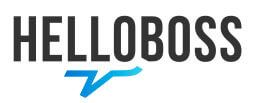Goals
● Develop a complete mobile app for Android and iOS
Program
Architecture and interface elements
● Introduction to mobile development
❍ presentation of mobile platforms
❍ panel of development solutions
● Titanium Architecture
❍ development principles for native application development
❍ phases of designing a mobile application
❍ Titanium compilation mode
● Presentation and configuration of the work environment
● Your first Titanium project
❍ creation of a project
❍ versioning a project
❍ how to organize the files?
❍ Ti.include () vs. CommonJS and require ()
What external libraries can help?
● UI elements: windows, views, and widgets.
❍ differences between Android and iOS
❍ positioning modes of the elements
● Event Manager
❍ transmission and reception
❍ local and global events
● Work with cartography
● Internationalizing an application
● Access to local data
❍ introduction of Ti.Database
❍ reading the SQLite database
● Access to remote data
❍ detect and use the network
❍ create an HTTP connection
❍ strategy for caching remote data
❍ manipulate sockets
Discover the Alloy framework
● Access hardware APIs
❍ accelerometer
❍ camera
❍ media
❍ geolocation
❍ file system
❍ address book
● Introducing Alloy, the official MVC framework for Titanium
❍ tools available
❍ creation of an Alloy project
❍ project architecture
● View management: XML templates and .tss styles
● Notions of graphic themes
● Controllers and behavioral application
❍ passing variables between controllers
● Data Management
❍ presentation of backbone.js
❍ data manipulation in a Titanium alloy application
● use external libraries
● Widgets creation and reusability
● "Tips and tricks" about alloy
Go further with Titanium
● Use Appcelerator Cloud Services APIs:
❍ user management
❍ management of business objects
● Interact with the user
❍ creation of a native menu on Android
❍ sending push notifications
❍ use "intents" and share information
● Publish its applications
❍ iTunes App Store
❍ Android Play Store
● Unit tests
● Practical resources
❍ debug applications
❍ monitor performance
❍ use specific typefaces
❍ find help
● Native extensions
❍ principles and use
❍ development of a simple native extension
● Open questions
❍ practical work
❍ examples of existing applications
❍ common architectural errors
❍ answer your questions
Good to know
Details
● Code: MO-APT
● Duration: 5 days (35 hours)
Public
● Project managers
● Developers
modalities
● Type of action: Acquisition of knowledge
● Training resources: On-site training - 1 job per trainee - 1 video projector - Course support provided to each trainee
● Teaching methods: Presentations - Practical cases - Synthesis
● Validation: Validation exercises - Certificate of internships
Organizer
Oxiane
Where does it take place?
20 Rue de l'Industrie
Windhof
Luxembourg
You could like it :

find out about all the networking events and trainings tailored for you!
find out about all the networking events and trainings tailored for you!







